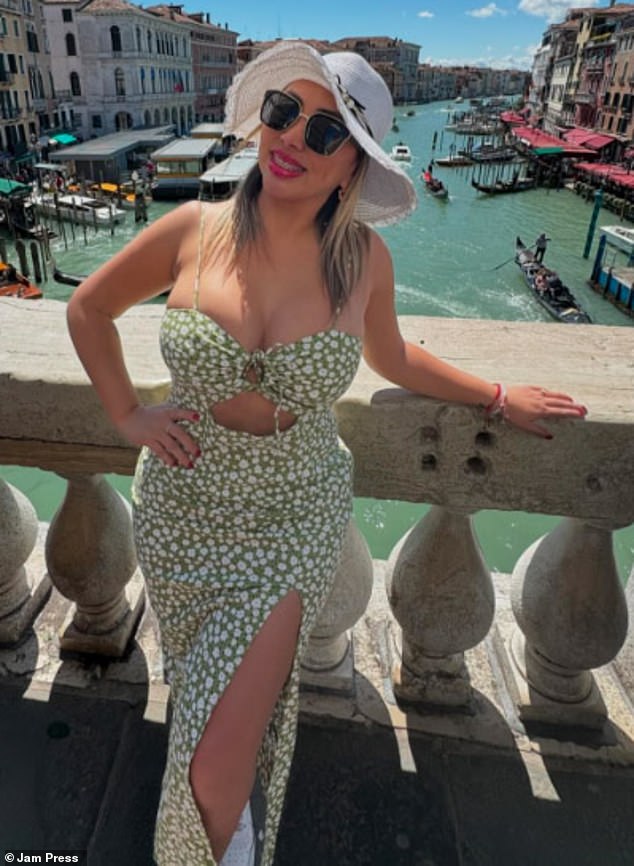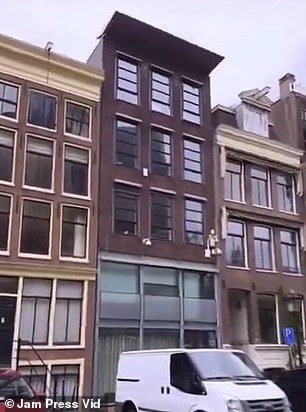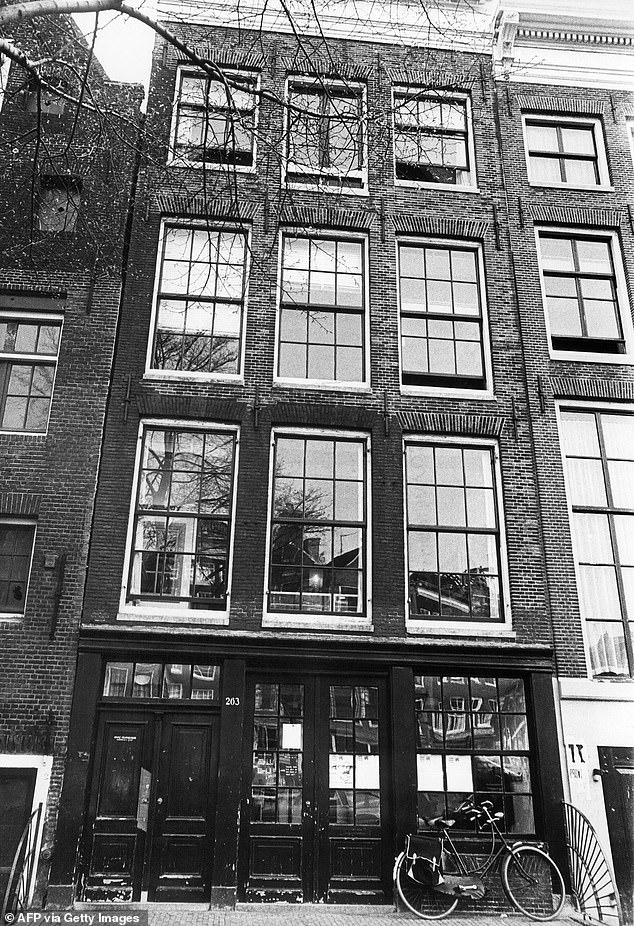Chilean influencer, 26, sparks outrage by claiming Anne Frank ‘lived better than we do’ after seeing the exterior of the Jewish wartime diarist’s Amsterdam home – and claiming ‘she had half the place to herself’
An influencer has caused outrage online by claiming Anne Frank ‘lived better than us’ during a visit to Amsterdam.
Chilean influencer Naya Fácil, 26, who has been on a trip through Europe, went to the Anne Frank House in the Dutch capital.
She was apparently surprised by the size of the 17th-century canal house where Anne hid from Nazi persecution during World War II, after comparing the facade of the entire museum with the size of nearby houses.
But Anne and her family hid alone in the back of the building, known as the Secret Annex, for two years before being captured by the Gestapo in 1944. Anne died in early 1945 at the age of 15 in the Bergen-Belsen concentration camp.
During a recent visit to the museum dedicated to the Jewish war diarist in Amsterdam, Fácil told her 2.4 million Instagram fans: ‘I am shocked by Anne Frank’s house. She had half the house to herself. She lived better than us.”
Chilean influencer Naya Fácil (pictured), 26, who has traveled through Europe, went to the Anne Frank House in the Dutch capital

The attic of the Anne Frank House in Amsterdam, pictured
During the livestream of her Instagram stories, Fácil also filmed the other houses around the museum and said: ‘Look, that’s her house and those are the other houses.’
Her post on her social media page, which is now private, sparked outrage online and even prompted a response from the Jewish Museum of Chile.
The museum published detailed images of the house at the time, correctly contextualizing Anne Frank’s story and the true nature of the place Fácil visited.
The organization also called on Fácil to receive the information with ’empathy and respect’.
In a post on Instagram, the museum writes: ‘The influencer Naya Fácil has uploaded a video from Amsterdam to her Instagram story, in which she refers to Anne Frank lightly and without adequate information.’
The aftertranslated from Spanish to English, added: ‘The influencer jokingly says: “Anne Frank lived better than us” and “she had half the house.”
‘What her video really shows, however, is the facade of the Anne Frank House museum, opened 64 years ago today, in which visitors can walk through the history of Anne, her family and Nazism in Amsterdam.’
It continued: ‘We appeal to verify with empathy and respect the information that will be disseminated, before providing incorrect data that is confusing and disrespectful.’

Naya (pictured) was apparently surprised by the size of the 17th-century canal house where Anne hid from Nazi persecution during World War II, after comparing the facade of the entire museum with the size of nearby houses

During a recent visit to the museum dedicated to the Jewish war diarist in Amsterdam, Fácil (pictured) told her 2.4 million Instagram fans: ‘I am shocked by Anne Frank’s house. She had half the house to herself. She lived better than us.”


During the livestream of her Instagram stories, Fácil also filmed the other houses (pictured right) around the museum (pictured left) and said: ‘Look, that’s her house and those are the other houses.’
In response to the backlash, the Chilean influencer apologized to those offended by her comments.
She said: ‘I’m sorry about Anne Frank, but people… instead of criticizing and condemning me, it would be better to educate or explain to me.’
In 1944, after hearing the BBC announcing the D-Day landings on their wireless set, Anne wrote: ‘Will this year, 1944, bring us victory? We don’t know yet.
‘But where there is hope, there is life. It gives us new courage and makes us strong again.’

Her post on her social media page, which is now private, sparked outrage online and even prompted a response from the Jewish Museum of Chile.

The organization urged Fácil (photo) to receive the information with “empathy and respect.”

In response to the comment (photo), the Chilean influencer apologized to those who were offended by her comments


Fácil (pictured) said: ‘I’m sorry about Anne Frank, but people… instead of criticizing and condemning me, it would be better to educate me or explain it.’
But it wasn’t to be. Tragically, 1944 only brought Anne’s imprisonment and death a year later.
While the liberation of the Netherlands by Allied forces did not begin until the following month, on August 4 the Franks – along with four other Jewish people – were discovered after successfully hiding from the Gestapo for two years.
An invoice from the GVB (Amsterdam’s municipal public transport company) for the last 900 tram journeys dated August 8, 1944 showed that Anne and her family were transported from Amsterdam Central Station.
They were sent to Auschwitz before Anne was transferred to Bergen-Belsen in November 1944.
Anne died of typhus in the Bergen-Belsen concentration camp in February 1945, days after the death of her sister Margot.

The house where Anne Frank lived in Amsterdam and where she went into hiding with her parents between 1942 and 1944 to escape the Nazis
Their mother Edith had died in January – separated from her daughters in Auschwitz. Their father, Otto, was the only one to survive.
In 1947 he published Anne’s diary about their life in hiding, presenting history with perhaps the most moving testament of the Second World War.
It remains one of the most read books in the world, with more than 30 million people having read The Diary of a Young Girl in 70 languages.
The author has become an icon of the silent resistance against the Nazis and a symbol of the indomitable human spirit.
